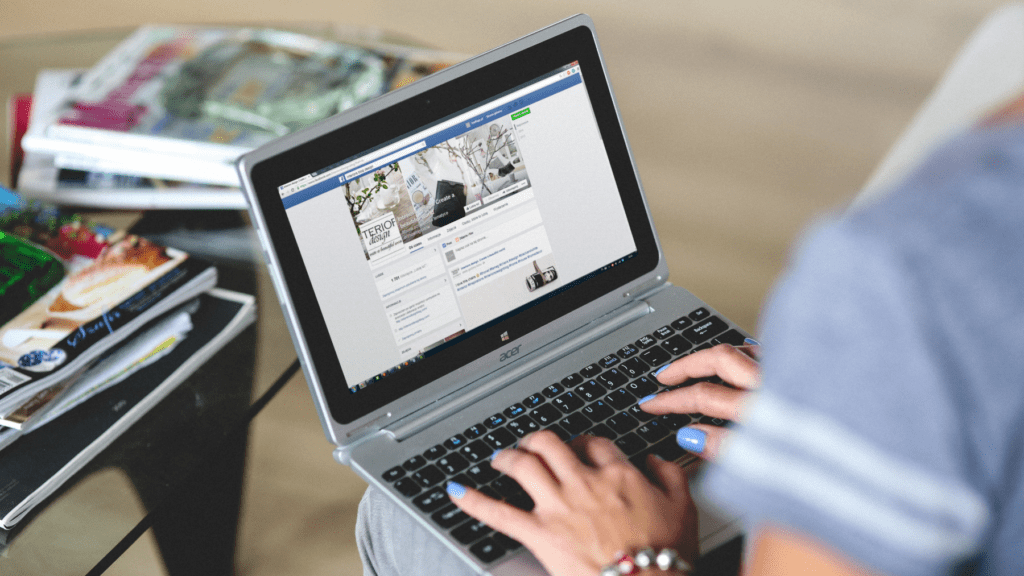
7 Steps to Avoid Privacy Breaches on Facebook

When Cambridge Analytica violated the privacy of over 87 million Facebook users in 2018, many of those in digital marketing took a step back to consider: How exactly can we protect our customers? Nobody wants their personal information leaked to the public without their consent, yet despite all our collective efforts to keep up with the times, over 500 million people were still found to have their personal data leaked to the public – yet again – in April.
With so many people feeling rightfully upset by this most recent betrayal, we understand why users all over the world may be tempted to delete their Facebook profiles altogether. We get it. We really do. And as tempting as it may be to simply close those accounts and move on with our lives, the fact of the matter is that most people simply won’t do that.

Despite Facebook’s egregious history, there are still 2.7 billion people with active accounts on Facebook. 2.7 billion people who choose to risk it anyway. Why? Because cutting themselves off from that many potential customers is not-so-metaphorical suicide for small business owners who desire to make connections in that community.
Our purpose is to help small businesses thrive. And while Two Trees PPC can absolutely help you advertise your services and promote your brand to the public in general, we simply cannot turn a blind eye to this topic without properly addressing it on the behalf of our customers and our community.
So, while Facebook still has the upper hand in all this… how exactly do we protect ourselves?
Table of Contents
- 500 Million? Really?
- Step 1: Secure Your Login
- Step 2: Content and Legacy
- Step 3: Timeline and Tagging Control
- Step 4: Keeping Up with “Friends”
- Step 5: Location Settings
- Step 6: Third-Party Apps and What to Look For
- Step 7: Think Before You Post
500 Million? Really?
Yes. It may sound crazy, but it’s true. While Facebook’s administrative team insists that this most recent privacy breach is merely a re-release of data collected back in 2019, the fact of the matter is that personal email addresses, phone numbers, locations, and more were leaked without their user’s consent. If you are unsure if your account may have been one of those 500 million, please click here to find out for sure.
The funny thing is that the only way to truly secure your privacy is not to capture or post content at all. We also understand the unlikelihood of that reality, which is precisely why this article exists.
Steps to Avoid Privacy Breaches on Facebook

Step 1: Secure Your Login
It might sound obvious, but this is a step that so many tend to overlook when they update their personal accounts. Many users admit that they have lost their logins to the mysterious capabilities of their device’s built-in “autosave” function, but it is worth attempting to reclaim if you wish to make absolutely sure that your account could be harder to hack into.
You can usually reclaim your login credentials by logging into your browser’s saved autofill collection, but there is another way to secure your account without even access this information:
- First, find and click on “Settings.”
- Change your settings to “Private.”
- Start using your browser’s built-in Password Manager. Saving the same password for all of your web profiles is dangerous because once a hacker has managed to access one account, they will have found the golden ticket to access all of your accounts. Your password manager was designed to help you prepare against this very eventuality. Might as well put it to good use.
- Next, we recommend that you enable Two-Factor Authentication. You can easily find this under your Login and Security tabs under “Settings.” Once you have finished setting up Two-Factor Authentication, you may also choose to set an alert so Facebook will automatically notify you when an unrecognized login attempt has taken place.
Not everyone wishes to set their accounts to “Private,” but if you fail to complete this step you are actually inadvertently allowing anyone to access the data you have posted on there. You can always choose which images you prefer to share publicly (such as your profile photos and cover photos, which are all set to Public by default), but we implore you to please reset your privacy settings to ensure that your information will only be visible to those you have accepted as “Friends.” If you wish to look into this further, you may do so by visiting the “Privacy Tab”, which you will find listed under Settings as well.
One of the best ways to keep up with such things is to perform your own security check every time Facebook notifies you of new updates to their website. We may not be able to do anything about their insecure storage habits, but we can do everything we can to protect our passwords and update our settings. And that begins with staying on top of things and updating our privacy settings ourselves.
Step 2: Content and Legacy
Now comes the part that most Facebook users would really rather avoid: Culling through your content! And unless your account happens to be one of those “new” to interwebs, there are probably thousands upon thousands of posts connected to your Facebook account by now. Can you confidently say that they are all set to Private?
For the best possible security settings, we would recommend that you begin with the following:
- Start with performing a privacy check! How do we do this? By changing all available settings to “Friends Only.” You can also set all available settings to “Only Me,” which is less common, but probably a good idea if your Friends List is full of questionable sorts you met at a party years back. This is the main reason that Facebook accounts may be easily breached. Because millions of users do not bother to perform regular privacy checks on their chosen social media platforms. Don’t forget: You can protect your data by regularly checking and updating those privacy settings.
- Update your Legacy contact. This might not seem as necessary as other steps, but having just survived the worst months of a pandemic, it is prudent to realize that if and when we die, all of our personal data will remain posted online. When we die, our social media presences become a type of memorial for a time and anyone who wishes to take what they want can do so if you have not yet made time to clean up your accounts. To prevent any unwanted use of your personal data, you can a) choose a “Legacy Contact,” or b) “Request that your account be deleted when you die.” This will make it clear to Facebook who you would personally like to manage your content, so that person can contact your friends and update your account on your behalf.
Step 3: Timeline and Tagging Control
This one is tricky. While it is absolutely true that you can control and manage all of your content, you also have no control over the things that other people choose to post. None. You might not be able to delete somebody else’s photo of you, but what you can do is control the ability for that content to be seen on your profile!
- Go to your Settings and click on “Timeline and Tagging.”
- Turn on the “Review Tags” and prepare to watch as those tagged images appear in a private tab! You will now have the freedom to approve of whichever posts you like best, while leaving the rest to never be featured on your profile. Thus, maintaining your right to privacy in the eyes of your “Friends.” Which brings us to the next step.
Step 4: Keeping Up with “Friends”
It seems like ages ago when we once maintained multiple and equally varied circles of friends. From boss buddies to distant relatives and all the strange and beautiful that color our inner circles, social media is… strange to say the least. While it’s true that you have the right to share whatever you please on your personal profiles, it is also true that not everything will be suitable for all the people on your Friends List. Some honestly do not mind the blurring of the lines, and that is perfectly fine. But if you happen to be one of the many who would prefer to keep the feelings of your “Friends” in mind when you post, there are a few things you can do to assist with that endeavor.
- You can access your Friends List and segment those user profiles into different groups. Just like when you culled through all your content, this can prove to be a time-consuming process, as you will have to visit each Friend account, one after another another, and add them to the group list that you created for them. You can choose to do this with your favorite circles to start with. Once finished, you will have complete control over who can see your content when you post content in the future.
- Cull through the old list of Friends! Delete anyone you don’t honestly want to see your content. Again, a time-consuming process… but worth it.
- Control who can see your Friends List. While it is a good idea to cull through your Friends on a semi-regular basis, you might not want just anyone to know who else has access to the content on your profile. When we really get down to it, your friends list is a carefully curated and detailed database of all the people that you know. Your Friends List, while seemingly harmless, can reveal more about you than you might be comfortable with. You can protect your privacy just a little bit more by hiding your Friends List – which is also something you can do in your Privacy Settings.
- Before you leave that tab, please be sure to update your availability to Friend Requests. Most profiles are automatically set up to allow anyone an opportunity to hit that button to request you as a new friend on Facebook. If you happen to be fine with this, no need to change it! But if you would rather make your account just that much more private, you can fix this by going to “Who can send me Friend Requests” in your Privacy Settings and updating those settings to “Friends of Friends.” Once finished, that oh so popular “Add Friend” button will no longer be visible to people your profile has no connections with.
Yet another funny and largely unknown fact about Facebook Friend Requests is that until you confirm or deny a request, these pending requests will be able to follow you on their news feeds. If you don’t want a bunch of unknown followers watching your posts and saving your info, please be sure to stay on top of those Friend Requests and deny any accounts that look unfamiliar to you. It is always best to cancel those unknown requests right away and mark those profiles as “spam” if the account if the connection is not one you wish to establish.
Step 5: Location Settings
Oh, the “Locations” Tab. The one place many of us will never think to check, yet it continues to be one of the most common pieces of data that find themselves included in these infamous privacy breaches. While it is true that you can “turn off” or disable your location history, you will need to disable all of your location settings on all of your devices in order to prohibit Facebook from having access to your location. This can be tedious, considering how handy it is to have your location activated when you choose to use Google Maps… but we simply must be sure you are informed of the risks as well. If wish to reduce your chances of giving Facebook access to your location you will have to do one of the following:
- Remove the Facebook App from any devices you want to have access to your Location. This is how they are able to read and access your location to begin with.
- If you do wish to login to Facebook on your device, be sure to turn off your Location via Device Settings.
- You may also choose to try using a Virtual Private Network (VPN) to protect your physical location from being tracked online. This is done through the use of a private server, which would be located in a different location entirely, and would therefore help to keep any websites you visit to know your true location.
We all know that in order to have a Facebook account, you will need to provide a full name, birth date, and contact info at the very least. When you connect to Friends, you are also allowing access to the names of your family members, past schools, places of work, favorite shows, groups, hometown, etc. If you fail to maintain your privacy settings, you will be putting yourself at serious risk of identity theft. If you truly wish to protect yourself from such things, you can change your settings to Private or delete any sensitive information on your profile altogether.
Step 6: Third-Party Apps and What to Look For
Every person on Facebook has seen an add about the latest coolest app. No matter how fun it may be to take part in a quiz, play a game, or swap a celebrity’s face with your own, every time you do this, you are giving that Third-Party App access to all of your more sensitive data.
In order to prevent apps using your info:
- Go to your “Apps and Websites” Tab under Settings.
- Remove any active connections that you no longer want to have access to your account.
- And though it may seem unrelated, be sure to turn off Face Recognition.
We have all heard the jokes about Facebook being a literal “book of faces.” And it is quite funny… until you realize their automated settings are made to allow Face Recognition at all times.
So, yes. Please be sure to turn off Face Recognition in addition to all those Third-Party Apps you unwittingly signed up for.
Step 7: Think Before You Post
Two Trees PPC simply cannot turn a blind eye to these past events, so the least we can do is prepare you for the days ahead. Now that you have finally cleaned up your Facebook account, you can breathe a much-deserved sigh of relief.
Set a reminder to check those privacy settings again in another month or two. You will want to make sure that Facebook’s future updates do not reset all the Privacy Settings you put so much work into customizing. And if you should ever choose to delete your Facebook account anyway, please know that you may do so by following these instructions.

How We Can Help
Two Trees was created for the sole purpose of helping small businesses thrive. We have trained to help businesses cope with moments just like this one, and while we can absolutely help you advertise your services more effectively, we simply cannot stand idly by without properly addressing this topic on the behalf of our customers and our community.
Be safe out there. And if you have any other questions, you know who to call.


